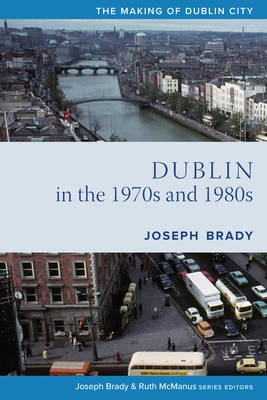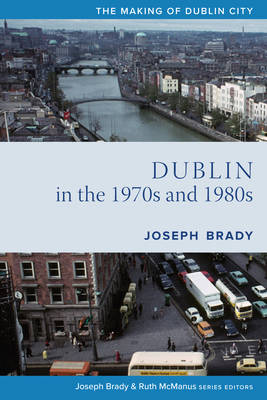
- Afhalen na 1 uur in een winkel met voorraad
- Gratis thuislevering in België vanaf € 30
- Ruim aanbod met 7 miljoen producten
- Afhalen na 1 uur in een winkel met voorraad
- Gratis thuislevering in België vanaf € 30
- Ruim aanbod met 7 miljoen producten
Zoeken
€ 31,45
+ 62 punten
Uitvoering
Omschrijving
Dublin's footprint grew steadily during the 1970s with housing transforming the landscape of the west of the city, especially in Tallaght, Clondalkin, and Blanchardstown. It was a time of change with the dominance of the city centre increasingly challenged by suburban shopping centres as Dubliners embraced the freedom offered by the motor car. Cars demanded more and bigger roads but it was realized that Dublin had to control rather than accommodate these demands. The suburban trend in housing, shopping, and jobs made the problem of decline and decay in the city centre even more acute. There was much talk about what needed to be done but little happened until the latter years of the 1980s. When change came it was dramatic and both the social geography of the city centre and its appearance were transformed in less than five years. The urban environment was given greater attention, largely because the issues could no longer be avoided. The Liffey stink was finally tamed after a century or more of complaints and Dubliners had to say farewell to open coal fires. Some things never changed! The problem of how to manage the city remained as intractable as ever despite significant changes in local government structures and the public housing need remained acute.
Specificaties
Betrokkenen
- Auteur(s):
- Uitgeverij:
Inhoud
- Aantal bladzijden:
- 464
- Taal:
- Engels
- Reeks:
Eigenschappen
- Productcode (EAN):
- 9781846829802
- Verschijningsdatum:
- 8/04/2022
- Uitvoering:
- Paperback
- Formaat:
- Trade paperback (VS)
- Afmetingen:
- 157 mm x 231 mm
- Gewicht:
- 1179 g

Alleen bij Standaard Boekhandel
+ 62 punten op je klantenkaart van Standaard Boekhandel
Beoordelingen
We publiceren alleen reviews die voldoen aan de voorwaarden voor reviews. Bekijk onze voorwaarden voor reviews.











